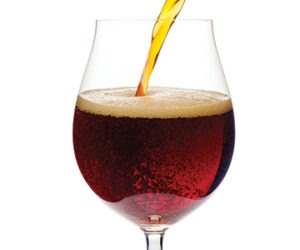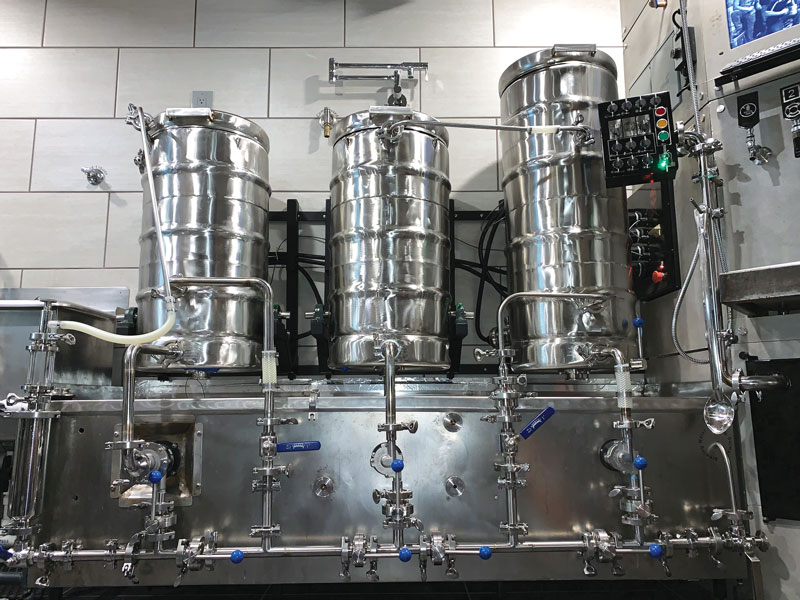The Belgian Masters Speak
Belgian brewing dates back centuries, yet the techniques that make Belgian beers among the finest and most unique in the world remain similar to this day. Belgian brewing has greatly influenced many of today’s American homebrewers. Among other things, it has taught us that the most excellent beers may not fit into strict style guidelines.
Thanks to the modern-day craft-brewing revolution, many Belgian artisan breweries have found a new, appreciative audience in the United States. Some of these breweries produce no more beer than your average American microbrewery, yet most of their bottles are shipped and sold overseas. And true to the roots of the homebrewing movement, Belgian beer fans have been inspired to recreate these excellent beers at home.
Replicating a beer can be a formidable proposition. This is particularly true for Belgian styles, many of which derive their character as much from the local environment as from the way they’re produced. In the Senne River Valley near Brussels, wild yeast and bacteria are used to ferment the valley’s famous lambic beers. Many purists argue that for a beer to be called a true lambic, it must be made in this valley — even if the same microbes are put to work elsewhere to make a similar beer. For many of the recognized Belgian beer styles, there may only be a handful of commercial beers that represent the category. Or one particular beer may have inspired many imitations; by doing so, a “style” was created. A good example is Duvel, the strong golden ale that defines that style.
That said, it’s not difficult to recreate Belgian beers. You just have to make a few minor adjustments to your homebrewing process. For advice, we turned to four professional brewers who are renowned for their fine Belgian beers. Here are their top tips.
Find Fresh Spices And the Finest Herbs
Pierre Celis almost singlehandedly revived Belgian witbier, a distinctive wheat beer that flourished in the 1700s but slowly fell out of fashion. Celis created the classic Hoegaarden Wit at the De Kluis brewery in the mid-1960s. After moving to Texas in the 1970s, he launched the Celis Brewing Company in Austin and used his knowledge to create Celis White. It was quickly accepted as one of the world’s finest witbiers.
In addition to unmalted wheat, this style requires such exotic spices as Curacao (bitter orange peel) and coriander (the seeds of the cilantro plant). “The freshness of the spices is critical,” says Lenzie Kinyon, the plant manager at Celis. “Most homebrewers have learned to look for fresh ingredients; they routinely check for signs of staling in their hops and malt. But this same care is not always applied to homebrewing spices and herbs.”
For many homebrewers, the only source of herbs and spices may be the local supermarket or health-food store, where freshness and quality may be hard to gauge. Experienced homebrewers know to look for refrigerated, vacuum-packed hops that are not brown in color; they know how to taste malt for stale flavors. But they may not be able to judge whether a spice is fresh or stale.
Over time, the oils and organic compounds begin to oxidize; this breakdown can be exacerbated when the spices come from remote locations, where processing, storage and shipping conditions may not be ideal. “Most Curacao orange peel comes from either Spain or Haiti, and just getting it in good condition can be a challenge,” says Kinyon. “When not properly stored, the bitter orange will exhibit a musty or even moldy aroma when it’s ground. If you use it anyway, these undesirable characteristics can find their way into the finished beer.”
The best way to become familiar with quality is to sample herbs and spices from a wide variety of sources and note the differences. Once you find excellent ingredients, storage is critical. “Much like hops, herbs and spices should be stored in a sealed container in a cold environment. “This will prolong their life,” says Kinyon. “Exposure to heat and oxygen are two of the biggest staling culprits. But if you use the best suppliers and take good care of the herbs and spices once they arrive, you’ll be able to taste the subtle nuances of these unique ingredients in the finished beer.”
Be Patient: Let Your Beer Develop Over Time
The Brew Moon Restaurant and Microbrewery in Boston won two medals at the 2000 World Beer Cup: a gold medal for Caveat Emptor, a Belgian Strong Pale Ale, and a bronze in the Lambic category for Cranberry Tart Oulde Ale. Scott Hutchinson, the director of brewing operations, was quick to point out that it took years — not weeks or months — to develop these award-winning beers.
“There are many Belgian yeast and lambic strains available, and learning their characteristics takes continual experimentation,” he says. Many homebrewers already experiment; they brew different batches to compare the similarities and differences. But when brewing Belgian beers, especially lambics, one of the greatest variables is time. “What you taste this year will be entirely different from what you taste next year, and it’ll be different again two years down the road,” says Hutchinson. So the key is: taste and wait, taste and wait.
The lambic styles use a wide variety of yeast and bacteria, and it can take years to develop a balanced beer. The AHA National Homebrew Competition provides a prime example: The winner of the lambic category is almost always a beer that’s more than a year old! With so many organisms involved, the Brew Moon brewers spend a great deal of time learning how a certain yeast or bacteria will react under different conditions.
Lambic brewing is full of surprises. A beer that’s undrinkable today might become world-class twelve months down the road. In addition, the beer may be changed by blending or adding fruit during the aging process. “Periodic tasting is a must with these types of beers,” says Hutchinson. “During the tasting process we make decisions about blending different beers or adding fruit to change the flavor.”
While sanitation is critical in any brewing process, Hutchinson says homebrewers should be particularly meticulous when recreating Belgian styles that incorporate unusual yeast strains or bacteria. “Since the flavor profile develops over such a long period of time, even the slightest contamination will have ample opportunity to grow,” says Hutchinson. “This can ruin a promising batch.”
“Many of these yeast and bacteria strains are very tenacious,” he says, “and just having them in the brewery creates the possibility of cross-contamination.” Cross-contamination occurs when a batch of beer is accidentally inoculated with the yeast or bacteria from another batch. This can happen when you use the same equipment or even brew a new batch in the same room. For a homebrewer who uses the same set of equipment to produce many different batches, this can mean disaster. After brewing a lambic, for example, your standard ales and lagers may start to exhibit sour and lactic characters. If you plan to dive into lambic brewing, it might be well worth your money to purchase specific equipment for the task, particularly when it comes to hoses and carboys.
Select Your Yeast Strain with Special Care
Brewery Ommegang in Cooperstown, New York has developed a reputation for brewing world-class Belgian ales. Head brewer Randy Thiel used to be a microbiologist; that career prepared him admirably for his position at Ommegang, where the selection and use of yeast strains is a high priority. Each of the brewery’s leading authentic Belgian ales — Hennepin, Rare Vos and Ommegang — feature complex, natural flavors from the yeast. Randy is emphatic on one point: “Regardless of how strong the wort is, the primary fermentation should be done in three to four days.” To achieve these results, he offers two simple tips: Pitch a large quantity of healthy yeast and oxygenate the wort well.
When selecting a strain, Randy looks for one that has good attenuation characteristics. Attenuation is the yeasts’ ability to convert the sugars in the wort into alcohol; a yeast with good attenuation will convert a high percentage of the available sugars into alcohol. “Whether the beer is starting with a moderate or high original gravity, a good Belgian yeast strain should still result in a low terminal gravity,” says Thiel.
Randy says many homebrewers mistakenly believe that a low terminal gravity results in a thin beer with little mouthfeel, something that’s definitely not a hallmark of a good Belgian beer. “A big malt bill will still leave a big malt flavor, even if the terminal gravity is low,” he says. “Big beers that finish with a high gravity tend to be sweet and cloying, and the only way to balance the flavor is with large doses of hops. The end result would be closer to a barleywine than a Belgian ale.” To further illustrate this point, Randy cites a classic Belgian beer, Scaldis. This Belgian ale contains 12 percent alcohol by volume and has a terminal gravity of 1.008. Yet the beer exhibits a big, rich malt character that finishes cleanly, free of any lingering sweetness.
“Remember that alcohol contributes more than just a warming sensation,” says Thiel. “Alcohol also creates the perception of body and mouthfeel.”
Fermentation temperature is another area in which Belgian beers tend to differ from their more traditional counterparts. “Belgian yeasts tend to prefer warmer temperatures, some as high as 80 degrees Fahrenheit,” says Thiel. Higher temperatures will usually result in more vigorous fermentations, which help achieve the four-day primary that Randy looks for. “More importantly, the warmer fermentations help create esters and fusels, compounds that add complexity to the beer’s flavor and aroma.” The fruity, spicy and earthy characters that define traditional Belgian beers do not always come from fruits, spices or herbs. Instead, they can be a natural byproduct of the fermentation process. “If you have to err with fermentation temperature in a Belgian beer, it is usually better to go high,” says Randy.
When selecting an actual yeast strain, there are a number of great sources, beginning with liquid-yeast suppliers such as Wyeast and White Labs. For every strain, the manufacturer can provide the relevant statistics on attenuation, optimum fermentation temperature, alcohol tolerance and ester production. (For a rundown on Belgian yeast strains, see the chart on page 45.) In addition, since so many Belgian ales are bottle-conditioned, a great source of authentic yeast can often be found in the bottles on the local liquor-store shelves.
When culturing a yeast strain from the sediment at the bottom of a bottle, Randy does have a note of caution: “All of Ommegang’s products are bottle-conditioned using our primary yeast, but many imported Belgian ales use an entirely different yeast, such as a lager strain, when packaging. This gives the beer greater stability and a longer shelf life.” In other words, a strain cultured from a bottle may be a perfectly good brewing yeast … but it may not lend any authentic characteristics to your beer!
When it comes to spices, Randy echoed many of the tips offered by Celis’ Kinyon. “Herbs and spices need to be used in moderation,” he says. “They should accentuate, but not overwhelm, the flavors and aromas from the malt and the unusual yeast strains. Too often homebrewers add a special ingredient to the point where the beer doesn’t taste like a beer anymore!” A good rule of thumb, Thiel says, is to use just enough spice so the flavor shows up in the final beer but remains so subtle that it’s hard to identify.
Forget Style Guidelines and Get Creative!
When Peter Bouckaert became the brewmaster for New Belgium Brewing Company in Fort Collins, Colorado, he arrived with more than ten years’ experience as a brewmaster for Rodenbach Brewery in Belgium. When he first came to America, Peter was taken aback by the American preoccupation with defining beers by strict style guidelines. “In Belgium, brewing is an art,” says Peter. “There is no Reinheitsgebot and no limitation on how anyone makes a particular beer.” As a result, many Belgian beers that are considered classics, such as Rodenbach, are really the only examples of a particular “style.” Local brewers adapted to local conditions and created their beer by relying on taste. So when Peter develops a new recipe, he begins by envisioning the taste profile of the finished product, then uses his knowledge of methods and ingredients to arrive there.
An example of this thinking is illustrated by one of New Belgium’s most recent offerings, “1554,” Peter’s reproduction of a traditional sixteenth-century Belgian beer. Peter started by researching the brewing techniques of that time period. Since the malting process was still fairly primitive, Peter surmised that most beers would be very dark. The beer would probably have been brewed to drink in a very short time, stored in oak barrels. After wrapping up his research, he then conducted three test brews.
Even though hops were not widely used in the 1500s, they were incorporated in this dark beer of moderate gravity. Lager yeast had not yet been isolated, but Peter used it to make 1554 — even though the beer is fermented at temperatures warmer than a standard lager.
“All of this adds a personal accent, and the beer sells by tasting it!” says Peter. “Freedom is unique to Belgian brewing, and homebrewers need to think like that. Andy Warhol never worried about what style he was working in. He simply painted. Brewers in America need to think the same way, to get away from style guidelines and cookbook recipes. When they are doing this, then they will truly be practicing authentic Belgian brewing.”
————————————-
WHAT IS CANDI SUGAR?
Forget the Reinheitsgebot: Besides malt, water, hops and yeast, many respected Belgian brewers add sugar to their beer. The most traditional form is “candi sugar,” a pure beet sugar that comes either as a syrup or a solid.
The solid variety looks a lot like old-fashioned “rock candy.” It’s made by slowly heating a concentrated sugar solution. As the liquid evaporates, the almost-pure sucrose crystallizes on cotton strings that dangle down into the tank.
The translucent chunks of sugar are easy to weigh and use; they simply melt in your brew kettle. Candi sugar increases alcohol content without making it apparent; it also smooths out a beer. One pound of candi sugar yields 1.036 degrees of specific gravity in one gallon of water.
Depending on whether it’s allowed to caramelize, candi sugar ranges in color from roughly 0.5° Lovibond (clear) to 75° Lovibond (amber) and 275° Lovibond (dark). Clear candi sugar is used in tripels, amber in dubbels and dark in brown beer and strong golden ales.
Many homebrew supply shops and mail-order outlets carry crystallized candi sugar.
A BELGIAN BREWING LIBRARY
- “Belgian Ale” by Pierre Rajotte (Brewers Publications, 1992).
- “Lambic” by Jean-Xavier Guinard (Brewers Publications, 1990).
- “The Good Beer Guide to Belgium and Holland” by
- Tim Webb (CAMRA and Storey Books, 1999).
- “The Classic Beers of Belgium” by Christian Deglas and Guy Derdelinckx (G.W. Kent, 1998).
- “The New World Guide to Beer” by Michael Jackson (Running Press, 1988).
- “Michael Jackson’s Great Beers of Belgium” by Michael Jackson (Running Press, 1998).



